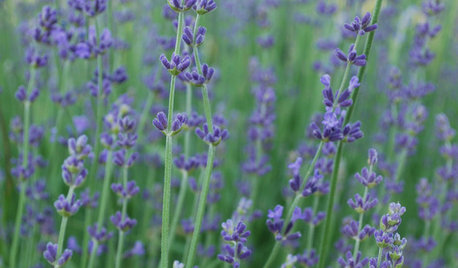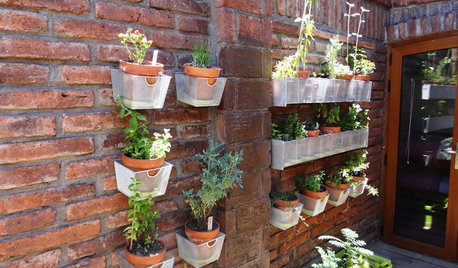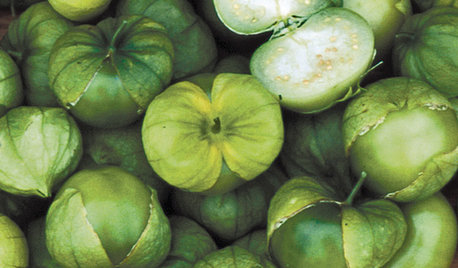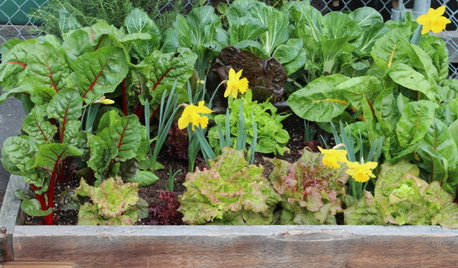On another thread we were talking about growing tomatoes and about finding tomato-growing info on the internet. We also discussed that the info you find is not always technically correct, or doesn't apply to growing tomatoes in the hot, steamy south. So, I thought I'd mention a handful of tomato books that I've found helpful. While none of these books are specifically written for southern growers, they do discuss information of critical importance, including varieties that do and do not grow well in our heat, the temperatures that impede or shut down pollination and fertilization, etc.
The problem with most books about growing tomatoes is that they are targeted to a national audience so they remain fairly general in nature and often make recommendations that don't necessarily work here. However, there are a few that avoid those pitfalls and give great info on growing tomatoes in general. I've read 4 or 5 over the years that I thought were worth the money I spent for them.
Here's some info on the top three:
1. 100 Heirloom Tomatoes for the American Garden by Carolyn J. Male, Workman Publishing, 1999, 246 pages.
This is the classic book on growing heirloom tomatoes written by a long-time seed-saver and heirloom tomato expert. Many of the heirloom tomatoes we enjoy so much today are available commercially because Dr. Male saved and shared their seeds.
This book has a brief section (about 40 pages) on the history of the tomato, selecting heirloom tomato varieties, growing heirloom tomatoes, how to save seed and how to create you own heirloom tomatoes. The info in this section is great, but it is the "field guide" to 100 heirloom varieties that is out-of-this-world!
Each of the 100 tomatoes has two pages devoted to it. One page is a full color close-up, always of tomatoes on the vine, and usually with a sliced fruit in one section of the photo and also at least one two turned upside down so you can see the blossom end.
On the remaining page for each tomato, there is a narrative that describes the plant, the fruit, its flavor, disease-resistance, and its history. At the bottom of each page, there is info on the following for each tomato: type, origin, maturity, color/shape, size/arrangement, yield, plant/foliage, taste and seeds. In general, it is very helpful info, but you'll have to go to the internet to get updated seed info since the book is 10 years old. I'm happy to report that the comment "not available commercially" which appears with some tomato varieties is not necessarily true any more. Many of these more obscure varieties that were not available commercially when Dr. Male wrote the book are now available commercially although it takes some searching to find them.
I love this book. Although I was already growing several heirloom tomatoes before I read it, of course I had to try many more after reading it. At this point, I've grown about 45 of the 100 varieties profiled in this book, and have another dozen or so of them on my list of tomatoes to grow "one of these days".
I especially appreciate the photographs in the book because they awakened me to all the variety and diversity out there in the heirloom tomato world. Nowadays, you often see heirloom tomatoes in all colors, shapes and sizes featured in gardening and cooking magazines, newspaper articles and on TV shows. However, back when I started growing heirlooms, you seldom saw any photos of the fruit and Dr. Male's book changed all that.
If you only read one book on growing heirloom tomatoes, it should be this book.
2. The Heirloom Tomato: From Garden To Table: Recipes, Portraits, and History of the World's Most Beautiful Fruit, by Amy Goldman, 2007, 272 pp.
This is the third is a series of book by Amy Goldman that focuses on growing heirloom vegetables. The first two were "Melons For The Passionate Grower" and "The Compleat Squash" and they both are spectacular one-of-a-kind publications that will make you drool.
This book is almost too beautiful to use and, while its gorgeous photographs by Victor Schraeger (who collaborated with Dr. Goldman on her other two books) make it look like a "coffee table book", this book is crammed full of helpful information and is meant to be used.
The book opens with detail information of growing heirloom tomatoes, harvesting them and saving their seed. It then goes on to provide extremely detailed information on approximately 200 heirloom tomatoes. For each tomato, the following info is included: tomato size, weight, shape, flesh color, skin color, texture, sweetness, plant habit, leaf type, synonyms, seed sources and more.
You'll also find very unique recipes for heirloom tomatoes, and a very detailed list of seed sources.
Many people feel this is the quintessential book on growing and using heirloom tomatoes.
I love this book and, of course, some of the varieties featured in it are now on my "must grow" list.
This book came out last August in hardbook, and the paperback edition is due this coming August, I believe.
I have all three of Amy Goldman's books and each is a real treasure. I can hardly wait to see which vegetable variety she tackles next. Her three books are among the most beautiful garden books ever published.
3. Giant tomatoes: giant yields, giant weights by Marvin H. Meisner, M.D., Annedawn Publishing, 2007, 150 pages.
With apologies to Dr. Meisner, who has written an amazingly wonderful and helpful book, I found the least helpful part of this book to be the title itself. If you see the title of this book, and you are not interested in growing "giant tomatoes" to enter in giant tomato contests or state/county fairs, you might think this book has nothing that would interest to you, and that would be a mistake.
I've read many, many books on growing tomatoes over the years and this is, hands down, the absolute best. While the overall object of the book is to teach one how to grow "giant" tomatoes for competition, this is simply the most informative and most useful book on growing tomatoes that I've ever read. You can read the book and apply most of what he says simply to growing normal tomatoes.
Dr. Meisner had the cooperation and assistance of some of the best growers of "giant tomatoes" in American in the research for/preparation of this book, and he quotes them often as they share their tips and methods. He also pays special tribute to Minnie Zaccaria, the New Jersey woman who has won the New Jersey Tomato Championship seven times and who developed Big Zac, a hybrid tomato that is grown by many gardeners (both those who grow giant tomatoes and those who grow regular tomatoes) every year. Near the end of the book, he also publishes (with permission) Gordon Graham's booklet on "How To Grow Giant Tomatoes". Gordon Graham is the current recordholder for having grown the world's largest tomato, a 7.750 lb. "Delicious" tomato grown in Edmond, Oklahoma, in 1986. I found the info in this reprint of the booklet especially helpful since Gordon Graham grew tomatoes right here in Oklahoma.
Dr. Meisner's book includes the following info: tomato history, seed selection, soil preparation, timing the planting of your tomatoes, seed starting, getting the plants successfully from the seedling to transplant stage, hardening off you plants, transplanting them into the garden, plant protection, mulching, pruning (more applicable to giant tomato growers than to the rest of us), megablooms (fused blossoms), plant staking and support, pollination, fertilization, watering, estimating size and how to pick and store tomatoes (again aimed at the giant tomato growers), tomato problems, seed saving, crossing tomatoes, composting, soil tests, growing degree days, common mistakes, mycorrhiae, etc.
If all that info is not wonderful enough, the back of the book features several appendices, including tomato basics, the anatomy of a tomato, a few basic and yummy tomato recipes, a glossary of terms that is most helpful, a list of suppliers, basic tomato info (mostly applicable to all tomato growers, but a couple of things on this list are more for giant tomato growers), how to germinate "old" tomato seed, profiles of the giant tomato growers who contributed info and comments to the book, and each grower's "secrets" to producing a really big tomato.
If you've never grown a tomato in your life, and you buy and use this book, you'll know everything you need to know about growing tomatoes, and you'll know more than 99% of the hobbyist backyard gardeners in this country.
I bought this book out of curiosity more than anything else because I wanted to see what competitive tomato growers do to produce the ultra-large tomatoes they enter in contests although I never have had any interest in growing tomatoes purely for size. I was pleasantly surprised to see that the book included everything I'd learned, bit by bit and from many sources, over many years of growing tomatoes and it had more. Although I was aware of growing degree days, for example, it gave the most useful description I've ever seen of how the GDD (or Accumulated Heat Unit) data is used.
And, I haven't even mentioned the gorgeous photos and very detailed drawings.
Finally, early in the book, Dr. Meisner gives a listing and brief description of about 50 varieties that have the potential to produce "giant" tomatoes. Of those varieties, I already had tried about 20 of them, including Pink Brandywine, Zogola, Old German, Big Rainbow, BigZac, and Mortgage Lifter. Since reading the book, I've tried a couple more and found them to be very, very tasty tomatoes and the fruit were quite large, although I wasn't growing for size. These include Tennessee Britches and Jerry's German Giant.
This is a great book on "how to" grow tomatoes and it is the only book you'll ever need, except you'll need to read Carolyn Male's and Amy Goldman's books afterwards to expand your knowledge of heirloom varieties.
I've read a lot of tomato growing books over the years and a lot of them were very good, but some of them are now out of date and others are out of print. The three books described above are in print, available and very useful. And, as I was writing about the books, it occurred to me that all three were written by people with either M.D. or Ph.D degrees. Although I don't think you must have a doctor's degree in order to write a great tomato book, apparently it helps. LOL
If any of you have favorite tomato growing books you'd like to recommend, I'm sure we'd all like to hear about them too.
Dawn













shekanahh
southerngardenchick
Related Discussions
Best Book for Growing Tomatoes & Other Vegies
Q
rotten straw for mulch?
Q
Remind me about tomato growing
Q
books about growing figs
Q
elkwc
Okiedawn OK Zone 7Original Author
elkwc
okiehusker
Okiedawn OK Zone 7Original Author
elkwc
Okiedawn OK Zone 7Original Author